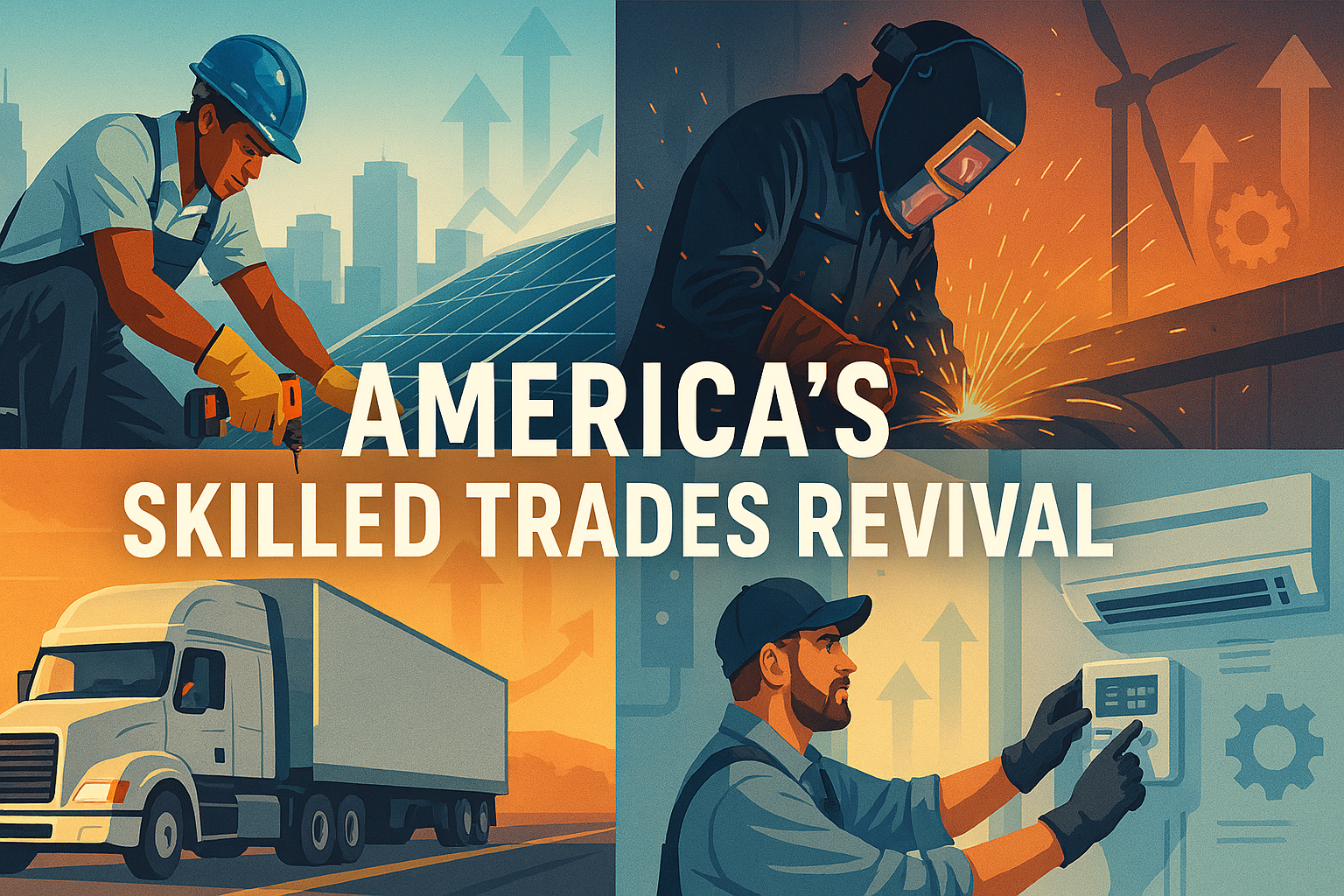Forget Silicon Valley for a moment—America’s next big labor boom is happening in the trades. Over the next decade, the U.S. will need approximately 810,000 new skilled trades workers, according to the Bureau of Labor Statistics (BLS). These aren’t fallback careers—they’re frontline roles in a rapidly evolving economy, offering significant potential for growth and advancement. From electricians wiring smart homes to welders building wind farms, the trades are becoming the backbone of infrastructure, manufacturing, and renewable energy.
The Trades in Demand
Here’s a breakdown of projected growth in key trades through 2034:
- Electricians: 9% growth, driven by smart tech and renewable energy. BLS also projects 11% growth between 2023 and 2033.
- Plumbers, Pipefitters, Steamfitters: 4% growth, fueled by aging infrastructure and new construction.
- HVACR Technicians: 8–9% growth, as energy-efficient systems become standard.
- Welders: Over 320,000 new jobs by 2029, with 2% growth projected through 2034.
- Construction Managers: 9% growth, reflecting infrastructure expansion.
- Commercial Truck Drivers: 4% growth, with an 80,000-driver shortage looming by 2025.
- Diesel Technicians: 2% growth, supporting logistics and heavy transport.
- Heavy Equipment Operators: 4% growth, with 45,700 annual openings by 2033.
- Wind Turbine Technicians: A staggering 61% growth rate is projected.
- Solar Panel Technicians: Rapid demand increase tied to clean energy goals.
- Carpenters: 4% growth, with steady demand in residential and commercial building.
- Aircraft Mechanics: 5% growth, supporting aviation and aerospace sectors.
Why the Shortage?
Despite strong demand, the skilled trades face a growing labor gap, which refers to the difference between the number of qualified workers needed and the number available. Here’s why:
- Retirements: Over half of current tradespeople are nearing retirement age.
- Outdated Perceptions: Many young people view trades as physically demanding or low-paying, despite modern advancements such as advanced tools, safety equipment, and digital technologies that have made the work more efficient and the earning potential strong.
- Training Bottlenecks: Limited vocational programs and a shortage of experienced mentors make it harder for new workers to enter the field.
Solutions on the Horizon
To close the gap, industry leaders and educators are pushing for:
- Expanded Training & Apprenticeships: Vocational education in high schools and partnerships between businesses and trade schools can build a job-ready workforce.
- Incentives & Recruitment: Competitive pay, signing bonuses, and better benefits can attract new talent. Marketing campaigns can also reshape public perception.
- Tech Integration: AI, drones, and advanced machinery are making trade work more efficient—and more appealing to tech-savvy workers.
Conclusion: The Future Is Hands-On
The next decade will redefine what it means to build a career in America. As infrastructure grows and clean energy accelerates, skilled trades will be at the center of progress. For those willing to learn, adapt, and work with their hands, the future looks not just promising—but essential.
